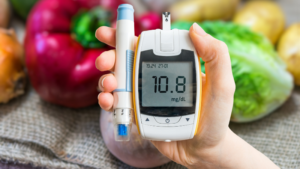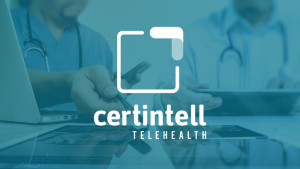Chronic disease is a growing epidemic; it currently holds the title as the number one cause of death and disability in the United States. With approximately 40 percent of American adults being diagnosed as obese, the food that one consumes plays a huge role in preventing chronic disease and maintaining a healthy weight¹. When patients make poor food decisions and consume non-nutritious meals, not only does body weight go up, but it also increases a patient’s risk for deadly diseases, such as diabetes and hypertension. However, the probability of making healthy decisions is dependent on the ability to understand food information.
Food literacy refers to how proficient an individual is in food-related knowledge and the ability to make informed choices about food they consume. This understanding of the details on food labels has been found to vary across different age groups, genders, and education levels. In one study, researchers found that although people self-report high levels of understanding, their actual comprehension level is much lower². They found that people with higher education, higher income, and those who were White were more likely to correctly calculate serving sizes of foods. With certain populations having limited food literacy, their overall health is at risk.
Although there are increasing rates of chronic disease and persistently low rates of food literacy in the United States, clinicians can play a significant role in increasing health outcomes.
How Clinicians Can Help Increase Health Outcomes
Education, health coaching, and telehealth can play a major role when encouraging patients to take back control of their own health. Through the promotion of health literacy, health systems can empower patients to make more informed decisions about the foods that they eat. Below are some strategies that can be implemented to do so.
Education:
A major way healthcare teams can enhance outcomes for patients is by employing different methods of nutrition education. When patients are able to understand how the food they consume impacts their health, they are more empowered to make healthier decisions. In a study done by the University of Leeds, they found that education interventions are statistically significant in improving participation comprehension and application of food information³.
There is an assortment of free, informative materials available online that you can use to help educate your patients.
When individuals use the information on food labels regularly, they tend to have better diets and health outcomes. However, in another study examining health literacy and behaviors of individuals enrolled in SNAP, researchers found that less than half of the participants reported using nutritional labels when purchasing food⁴. The FDA website provides easy-to-digest infographics to teach individuals how to read food labels. By using these materials, your patients can learn how to make better decisions with the food that they eat:
The U.S. Department of Agriculture also provides educational materials on overall nutrition; food safety; healthy eating for breastfeeding; how to prevent food waste; and healthy recipes on their website:
RPM to Drive Positive Nutritional Behavior:
Similarly to food literacy education, Remote Patient Monitoring, or RPM, can be an effective tool to enhance outcomes for patients with hypertension and diabetes. RPM enhances patients’ engagement with their care, therefore assisting in patient adherence and improving health outcomes. A study done at the St. Joseph’s/Candler Health System in Savannah, Georgia found that through the use of remote monitoring, patients saw improvements in clinical outcomes related to Type 2 Diabetes, despite barriers such as contracting COVID-19⁵. During the study duration, they found that in the non-RPM group, 41.7 percent of patients had their A1C levels under control, while in the telehealth group, 54 percent of patients met that goal, while still adhering to their medication regimen.
By enrolling your patients in an RPM program, care managers and clinicians are able to consistently and promptly monitor vitals pertinent to a patient’s health. That data can then be interpreted and used to help manage their health goals and help create new care plans.
Health Coaching:
Similarly to RPM, the use of health coaches can be a great way to empower your patients to participate in their own healthcare and give them the tools to be successful. Health coaches provide support, motivation, and education to help patients reach their goals. Here are just some of the ways a health coach can be beneficial to patients:
- Empowering individuals: Health coaching can help individuals understand how their lifestyle choices and behaviors impact their health and empower them to take ownership of their health and make informed decisions about their health care.
- Promoting behavior change: Introspective education through health coaching can help individuals identify and address unhealthy behaviors, such as poor diet and lack of physical activity, and adopt healthier habits. This can lead to improved health outcomes, such as weight loss, better blood sugar control, and improved cardiovascular health.
- Improving adherence to treatment: Health coaching can also help individuals adhere to medical treatments and interventions prescribed by their healthcare providers. This can be particularly helpful for individuals with chronic conditions who may need ongoing support to manage their health.
- Addressing social determinants of health: Health coaching can also help address social determinants of health, such as access to healthy food and safe housing. By referring patients to social care resources, health coaches can help individuals overcome barriers to good health.
How Certintell Can Help:
Certintell’s care model is built to support care teams with patient empowerment and behavior change efforts! Our company hosts an RPM platform which is accompanied by cellular-connected devices and health coaches that allow health centers to easily access progress data and receive alerts regarding patient vitals. Our health coaches can help aggregate and interpret this data and provide pinpointed techniques patients can use to eat healthier and live longer.
SOURCES:
- “Obesity Is a Common, Serious, and Costly Disease.” Centers for Disease Control and Prevention, 20 July 2022, www.cdc.gov/obesity/data/adult.html.
- Sinclair, Sarah, et al. “Sociodemographic Differences in the Comprehension of Nutritional Labels on Food Products.” Journal of Nutrition Education and Behavior, vol. 45, no. 6, Elsevier BV, Nov. 2013, pp. 767–72, doi:10.1016/j.jneb.2013.04.262.
- Moore, Sally Falk, et al. “Effect of Educational Interventions on Understanding and Use of Nutrition Labels: A Systematic Review.” Nutrients, vol. 10, no. 10, MDPI, Oct. 2018, p. 1432, doi:10.3390/nu10101432.
- Speirs, Katherine E., et al. “Health Literacy and Nutrition Behaviors Among Low-Income Adults.” Journal of Health Care for the Poor and Underserved, vol. 23, no. 3, Johns Hopkins UP, Aug. 2012, pp. 1082–91, doi:10.1353/hpu.2012.0113.
- Woodhouse, Ashley G., et al. “Diabetes Outcomes Before and During Telehealth Advancements Surrounding COVID-19.” Journal of the American Pharmacists Association, vol. 62, no. 1, Sept. 2021, www.japha.org/article/S1544-3191(21)00381-2/fulltext#secd20843254e553.





